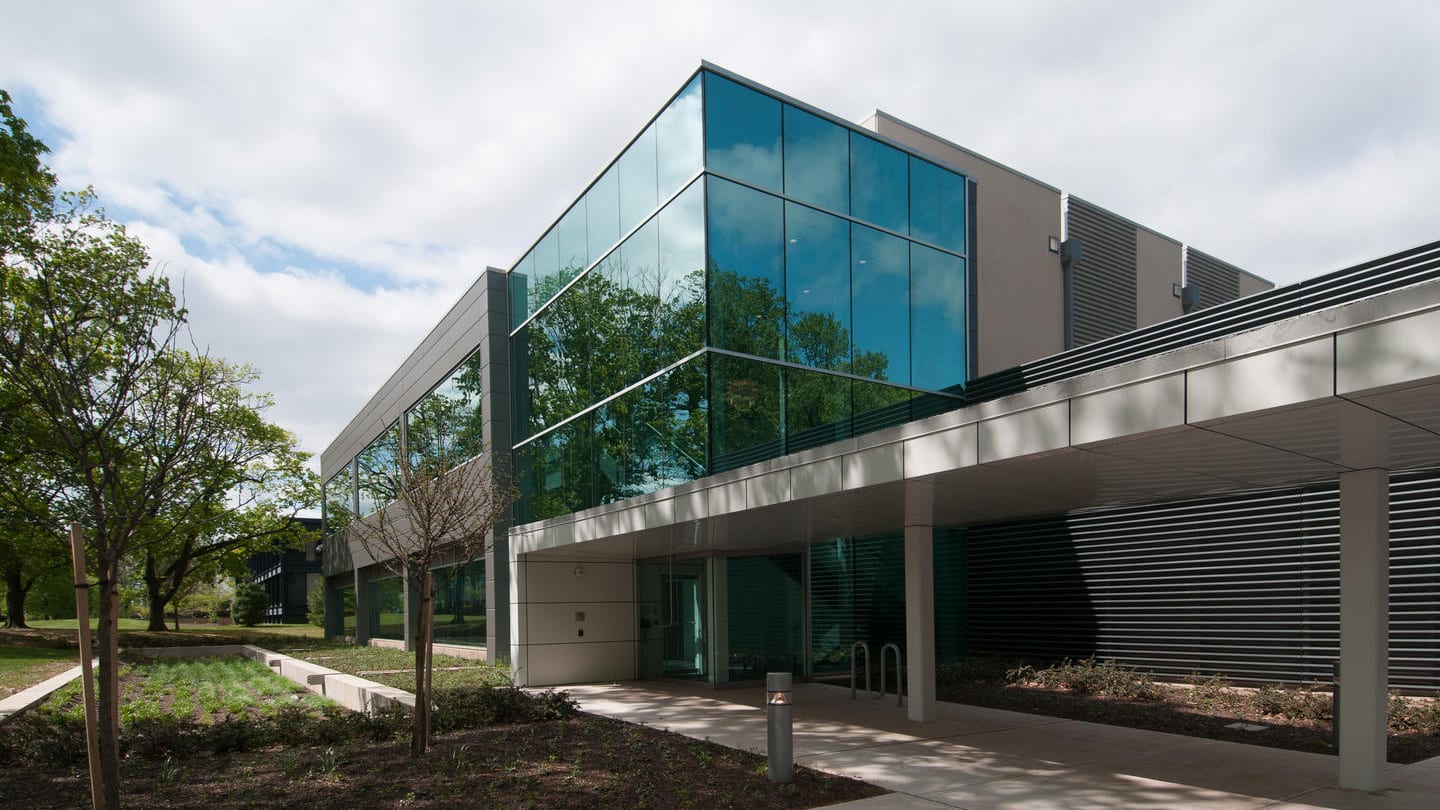PRINCETON UNIVERSITY HIGH-PERFORMANCE COMPUTING RESEARCH CENTER
Comply with Princeton University’s rigorous Sustainability Plan to conserve resources and reduce greenhouse gas emissions; achieve minimum Leadership in Energy and Environmental Design (LEED®) Silver certification, and launch operations in time for research grant cycle.
Serving faculty, researchers, students and staff, the nearly 40-year old data center on Princeton University’s main campus was approaching its operational limits. The facility’s energy usage exceeded the University’s Sustainability Plan benchmarks; it lacked backup power capabilities for extended outages; and it had exhausted its electrical, cooling and redundancy capacities.
With more than three years in planning, design and construction, Princeton’s new High-Performance Computing Research Center (HPCRC) came fully online in February 2012. The HPCRC supports the University’s move toward more cost-effective, centralized computing. Its assets include the Terascale Infrastructure for Groundbreaking Research in Science and Engineering (TIGRESS), which accounts for 70 percent of the center’s computing power. The remaining 30 percent supports University administrative systems and departmental functions.
In July 2012, the HPCRC achieved U.S. Green Building Council® LEED Gold certification, to date one of only nine data centers in the world with that distinction, as well as ENERGY STAR® certification. It is currently consuming one-third less energy than the former data center.
Following its success with major mission-critical data center installations, Automated Logic was selected to provide the building control system for the HPCRC. The two-story, 47,000 square feet facility features sophisticated HVAC technology, monitored by Automated Logic’s WebCTRL® building automation system, to keep its 1,800 computers safely operating. Three chillers maintain water temperature at 45 degrees Fahrenheit; four air handling units cool the equipment. In the event of power failure, a 97,000-gallon tank of pre-cooled water stands adjacent to the building, ready to be used until backup power is online.
To conserve energy, the system can switch to outside air during colder months, and cooling towers can override the chillers when outside temperatures approach the freezing mark. The HVAC system features demand reduction cogeneration capabilities as well: a natural gas-driven generator, switched on when electricity prices spike, captures expelled heat as a source of energy to power the absorption (water) chillers. An added benefit, this “cogen” power has a lower carbon footprint than electricity from the power utility.
Automated Logic’s WebCTRL® system provides multiple levels of redundant (N+1) control, integrated with the facility’s N+1 Uninterruptible Power Supply (UPS). Together, they helped sustain operations at the HPCRC during 2012’s Superstorm Sandy. Making landfall in the Northeast on October 29, the storm caused some structural damage on campus, and the HPCRC lost utility power for 29 hours. Its backup diesel generator immediately took over for secure, uninterrupted operation.
The HPCRC’s energy savings over the former data center quickly proved to be substantial. Less than a year in operation, its Power Usage Effectiveness (PUE), the ratio of total facility power to computing equipment power, measured 1.5, one-third less than the 2.2 PUE at the previous facility. Calculated continuously in real time, the PUE is one of a number of trend reporting features being extensively used by University Facilities personnel. Pumps circulate water cooled to 45 degrees Fahrenheit, which in turn cools the air to keep the operating environment safe for computers.
“The [WebCTRL] technology and team are very experienced in data center management,” noted Bill Broadhurst, PE, CEM, LEED AP, Campus Energy Manager for Princeton University. “Their people made a real difference. We appreciate the team, their depth of knowledge and how it was applied.”
“The HPCRC is a robust facility,” added John Ziegler, AIA, Princeton’s Director of Real Estate Development. “We are populating it faster than anticipated, and it’s fascinating to see the level of control afforded us by the WebCTRL system. It will serve us well for years to come.”
"The University community is working diligently to reduce campus carbon emissions to 1990 levels by 2020, and the solutions applied at the HPCRC are helping us get there," said Shana Weber, Ph.D., Manager, Office of Sustainability, Princeton University. "Our ability to track its impact within the University’s program of emissions-reducing strategies is extremely helpful to our planning efforts."



